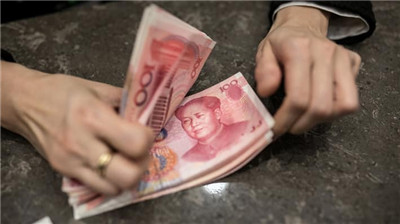(单词翻译:单击)
China is to scrap bank lending caps in a bid to galvanise the slowing economy with credit, the latest milestone in liberalising the tightly controlled banking sector.
中国将取消银行贷存比限制,试图以信贷来提振不断放缓的经济。对于受到严格管控的中国银行业来说,此举是自由化道路上最新的一座里程碑。
The State Council, China’s cabinet, on Wednesday issued a draft proposal to ditch the country’s long-held loan-to-deposit ratio of 75 per cent. This follows April’s launch of a long-awaited deposit insurance system, a crucial step towards deregulating domestic interest rates and market-based capital allocation.
周三,中国国务院公布了一份法律修正案草案,拟删除存在已久的银行贷存比不得超过75%的规定。此前,中国曾在今年4月推出了一项人们期盼已久的存款保险制度,向国内利率去监管化和资本配置市场化迈出了关键一步。

Scrapping the LDR cap, which could become law next year, would allow banks to act more like their peers elsewhere and seek alternative sources of funding such as the interbank markets. China’s banks have an overall LDR of about 65 per cent while the Australian banking system, for example, has an LDR of 113 per cent, according to ANZ economists.
取消贷存比限制的方案可能会在明年成为正式法律条文,它将让中国的银行能以更类似国外同行的方式运作,并让它们能够从别的来源获取资金,比如从银行间市场。根据澳新银行(ANZ)经济学家的说法,中国银行业整体贷存比约为65%,而澳大利亚银行业整体贷存比为113%。
The changes, however, are not expected to lead to a wave of fresh lending, since weak demand from borrowers and lower risk appetite from the banks are bigger drags on credit growth than the LDR cap.
不过,这一改革预计不会引发新一波放贷潮,因为借款方需求疲软和银行风险偏好降低才是拖累信贷增长的最大因素。
Smaller institutions, which have nudged up against the cap more than their larger rivals who have far bigger deposit bases, are expected to be the key beneficiaries of the move.
比起存款基础大得多的较大金融机构,较小金融机构触及贷存比上限的次数更多。因此,后者预计会成为这一举措的主要受益者。
The country’s big four banks — Bank of China, ICBC, China Construction Bank and Agricultural Bank of China — have LDRs of less than 65 per cent, according to Capital Economics, while many smaller banks are already bumping up against the 75 per cent ceiling.
凯投宏观(Capital Economics)的数据显示,中国“四大行”——中国银行(Bank of China)、中国工商银行(ICBC)、中国建设银行(China Construction Bank)和中国农业银行(Agricultural Bank of Chian)——的贷存比不到65%,许多中小银行的贷存比则已触及75%的上限。
“The new move is again aiming at relaxing the funding constraint of smaller banks to encourage more lending to small businesses who are often crowded out by state-owned banks,” said Minggao Shen, head of China research at Citigroup.
花旗集团(Citigroup)中国研究主管沈明高表示:“这一新举措再次把目标放在放宽中小银行的资金限制上,这是为了鼓励它们更多地向小企业放贷。这些小企业在国有银行眼中往往排不上号。”
China’s central bank has already lowered the proportion of deposits banks must hold in reserve — the reserve ratio requirement — twice this year, including a 100-basis point cut in April that was the largest move since the 2008 financial crisis.
今年,中国央行已两次下调存款准备金率,包括在今年4月把存款准备金率下调100个基点——这是2008年金融危机以来的最大幅度下调。
The embrace of market forces only goes so far, however. Beijing made it clear where it wants any new lending to go in a statement that said the LDR removal would “strengthen the ability of financial institutions to lend more to the agriculture sector and small businesses”.
不过,中国对市场机制的接纳是有保留的。在一份声明中,中国政府明确表明了它希望新贷款流向何处。这份声明称,取消贷存比上限将“增强金融机构扩大‘三农’、小微企业等贷款的能力”。


